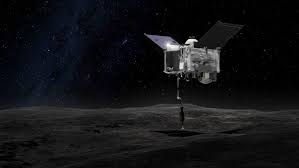
Breaking News
 US NAVY USELESS: China Activates "Land Route" to Drain Russian Silver
US NAVY USELESS: China Activates "Land Route" to Drain Russian Silver
 Lego's next-gen bricks make your creations interactive
Lego's next-gen bricks make your creations interactive
 Perhaps We Should Actually Be Focusing On Fixing America
Perhaps We Should Actually Be Focusing On Fixing America
Top Tech News
 The First Production All-Solid-State Battery Is Here, And It Promises 5-Minute Charging
The First Production All-Solid-State Battery Is Here, And It Promises 5-Minute Charging
 See inside the tech-topia cities billionaires are betting big on developing...
See inside the tech-topia cities billionaires are betting big on developing...
 Storage doesn't get much cheaper than this
Storage doesn't get much cheaper than this
 Laser weapons go mobile on US Army small vehicles
Laser weapons go mobile on US Army small vehicles
 EngineAI T800: Born to Disrupt! #EngineAI #robotics #newtechnology #newproduct
EngineAI T800: Born to Disrupt! #EngineAI #robotics #newtechnology #newproduct
 This Silicon Anode Breakthrough Could Mark A Turning Point For EV Batteries [Update]
This Silicon Anode Breakthrough Could Mark A Turning Point For EV Batteries [Update]
 Travel gadget promises to dry and iron your clothes – totally hands-free
Travel gadget promises to dry and iron your clothes – totally hands-free
 Perfect Aircrete, Kitchen Ingredients.
Perfect Aircrete, Kitchen Ingredients.
 Futuristic pixel-raising display lets you feel what's onscreen
Futuristic pixel-raising display lets you feel what's onscreen
 Cutting-Edge Facility Generates Pure Water and Hydrogen Fuel from Seawater for Mere Pennies
Cutting-Edge Facility Generates Pure Water and Hydrogen Fuel from Seawater for Mere Pennies
NASA's OSIRIS-REx collects sample from surface of asteroid Bennu

Launched atop an Atlas/Centaur booster from Space Launch Complex 41 at Cape Canaveral Air Force Station in Florida on September 8, 2016 at 7:05 pm EDT, the robotic OSIRIS-REx probe spent four years matching orbits to rendezvous with Bennu before making a detailed survey of the body's surface to find a safe area of scientific interest.
Because Bennu is 205 million miles (330 million km) from Earth, it takes a radio signal 18 minutes to reach the spacecraft from mission control, so today's Touch-And-Go (TAG) maneuver was carried out under completely autonomous control by the onboard computer, relying on updated instructions from NASA engineers.
During the approach, the robotic arm called the Touch-And-Go Sample Acquisition Mechanism (TAGSAM) was deployed with its disk-shaped sample collection head forward and the solar panels angled back to avoid accidental contact with the asteroid. The spacecraft then slowly approached the 26-ft (8-m) diameter "Nightingale" landing site from its normal orbit altitude of 2,500 ft (770 m) using its Natural Feature Tracking system to make a safe approach and then pull back from Bennu before a collision could occur

 Not Worth a Continental
Not Worth a Continental

